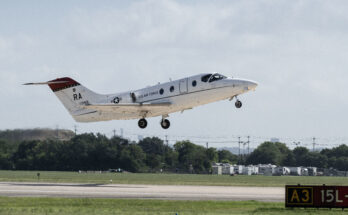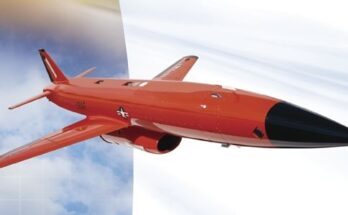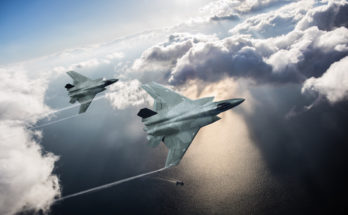BY AUDREY DECKER, Staff Writer, Defense One
The estimated lifetime cost to operate and maintain the Pentagon’s F-35s just took a big jump, even though the U.S. military is flying the jet less.
The total cost of operating and maintaining the triservice jet is now expected to surpass $1.5 trillion, up 44% since a 2018 estimate, according to a new report from the Government Accountability Office. The increase largely reflects the military’s decision to push the aircraft’s retirement from 2077 to 2088, but also includes other factors that are driving costs up.
The Defense Department has tried to reduce costs on the program, but “DOD officials generally agree that these efforts are not likely to fundamentally change the estimated costs to operate the aircraft,” the report said.
GAO also notes that the Pentagon plans to fly the F-35 fighter jet less often than originally planned, due partly to “reliability issues,” GAO said, which have contributed to a five-year decline in readiness.
“We have consistently found that the F-35 fleet is not meeting its availability goals, which are measured by mission capable rates (i.e., the percentage of time the aircraft can perform one of its tasked missions), despite increasing projected costs,” GAO said.

Many problems reduce F-35 readiness, including a “heavy reliance on contractors, inadequate training, lack of technical data, lack of spare parts, and lack of support equipment,” the report said.
The Joint Program Office has “continued to reduce sustainment costs through growth and maturation of the F-35 Enterprise including JPO Product Support Manager efforts to drive down contract costs; better alignment of US Services requirements and budgets; and an active cost reduction initiative pipeline,” JPO spokesperson Russ Goemaere said in a statement.
Goemaere said these efforts had reduced the F-35’s “cost per tail per year” by 34 percent, from $9.4 million in 2014 to $6.2 million in 2022. He also said the “cost per flying hour” had dropped from $87,000 to $34,000 over that span, in constant 2012 dollars.
The Pentagon, which depends on jet-builder Lockheed Martin to lead and manage sustainment, is trying to expand “government control” over the program to reduce program costs and improve program performance, GAO said.
The Pentagon has been exploring a performance-based logistics contract with Lockheed, under which the company would be paid to produce outcomes, not provide quantities of parts and services. However, late last year, Pentagon officials decided to pause negotiations with Lockheed over the deal to sustain the F-35 fleet.
“We stand ready to partner with the government as further sustainment plans are created to maintain mission readiness and deterrence for the F-35, now and through its extended service life of 2088,” Lockheed said in a statement.
The watchdog agency pointed out that the Pentagon has not implemented a number of recommendations the GAO has made over the years on F-35 sustainment.
“For example, DOD has not implemented GAO’s recommendations that it update the sustainment strategy for the F-35 engine, improve the program’s management of spare parts, and reassess government and contractor responsibility for different aspects of F-35 sustainment,” the report said.
Lawmakers will likely ask about the program’s readiness problems on Tuesday during a House Armed Services Committee hearing with Lt. Gen. Michael Schmidt, the F-35’s program executive officer.
From design to retirement, the F-35 program is now estimated to reach a total cost of $2 trillion, GAO said, up from the previous estimate of $1.7 trillion.
Defense One delivers news, timely analysis, and bold ideas on the topics and trends that are defining the future of U.S. defense and international security.
Founded in 2013, Defense One gives military and security professionals, stakeholders, and citizens what they need to know, from senior leaders in Washington to commanders abroad and next-generation thinkers far from the political scrum. Our journalists write breaking news of the day and in-depth stories shining a critical light across the national security landscape. Defense One publishes innovative, fearless commentary from old hands and new voices in the national-security community. We stage live events with exclusive newsmaker interviews and discussions led by our experienced journalists. And we produce award-winning podcasts and informative videos.




